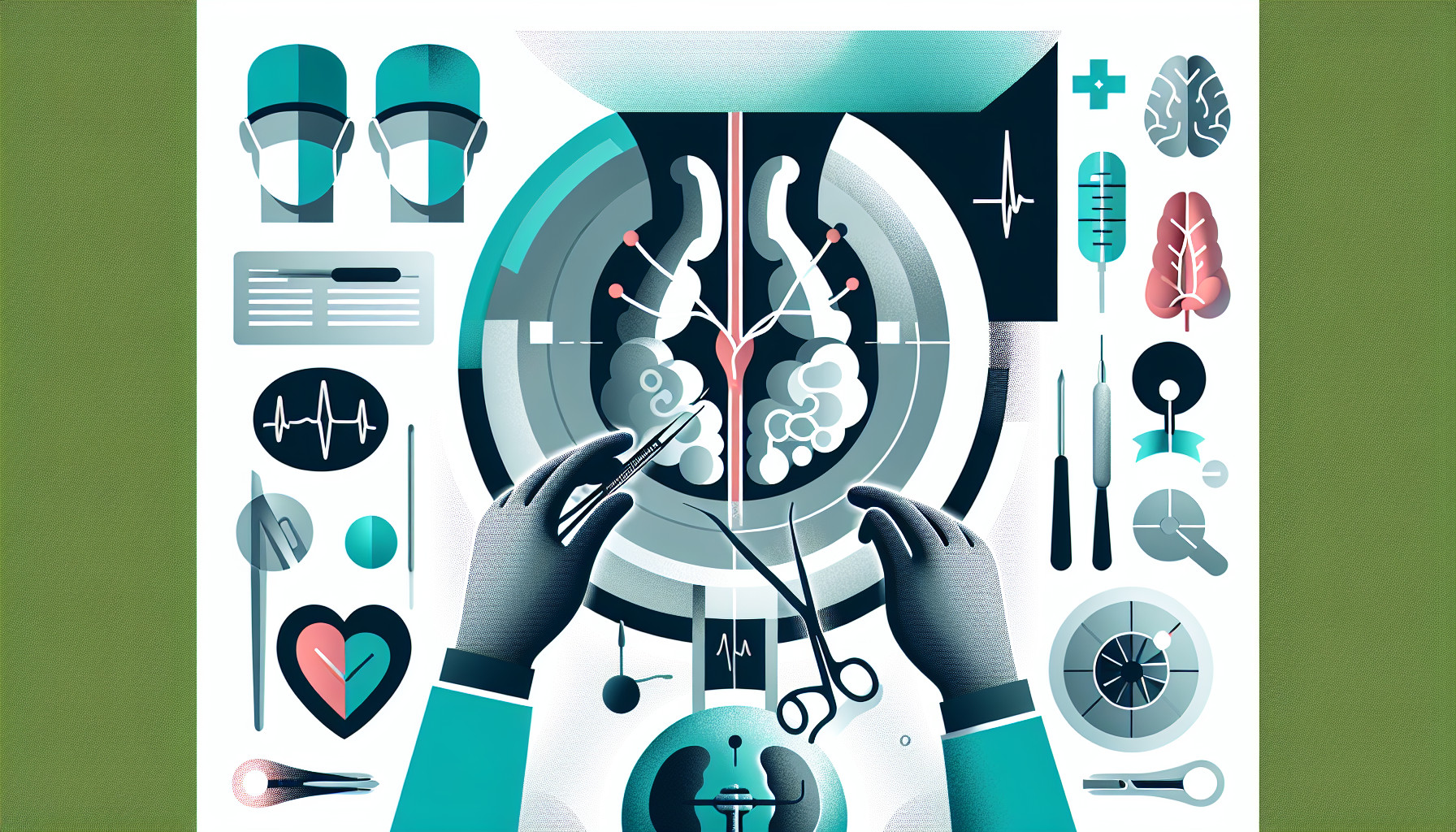Our Summary
This research paper discusses the advancements in the tools and procedures used to surgically insert inflatable penile prostheses (IPP), a device used to treat erectile dysfunction. Since the first IPP was introduced in 1973, there have been numerous improvements not only to the device itself, but also to the surgical tools used in its insertion. This includes advances in dilators, retractors, and cavity-opening tools, as well as in forceps, needle holders and clamps. The paper acknowledges the contributions of major companies like Boston Scientific and Coloplast to these innovations, and notes that other companies are developing new specialised tools. The aim of the paper is to provide an overview of the tools required for IPP insertion, and to highlight the variety of tool innovations since the first IPP was designed and inserted.
FAQs
- What are the advancements in the tools used for the insertion of inflatable penile prostheses (IPP)?
- How have companies like Boston Scientific and Coloplast contributed to the innovations in IPP insertion tools?
- What is the main goal of this research paper on advancements in IPP insertion tools?
Doctor’s Tip
One helpful tip a doctor might tell a patient about penile implant surgery is to carefully follow post-operative care instructions to ensure proper healing and functionality of the implant. This may include avoiding strenuous activities, maintaining good hygiene, and attending follow-up appointments to monitor progress and address any concerns. It is important for patients to communicate openly with their healthcare provider and ask any questions they may have throughout the recovery process.
Suitable For
Patients who are typically recommended penile implant surgery are those who have tried other treatments for erectile dysfunction without success, such as medication or vacuum devices. Candidates for penile implant surgery may have severe erectile dysfunction that is impacting their quality of life and relationships. Additionally, patients with certain medical conditions, such as diabetes or spinal cord injuries, may be recommended for penile implant surgery as they may not respond well to other treatments. It is important for patients considering penile implant surgery to discuss their options with a urologist to determine if they are a suitable candidate for the procedure.
Timeline
Before penile implant surgery:
Initial consultation with urologist: The patient meets with a urologist to discuss their erectile dysfunction and explore treatment options.
Pre-operative assessments: The patient undergoes various tests and assessments to determine if they are a suitable candidate for penile implant surgery.
Surgical planning: The urologist discusses the different types of penile implants available and helps the patient choose the best option for their needs.
Pre-operative instructions: The patient receives instructions on how to prepare for surgery, including fasting guidelines and medication adjustments.
Surgery: The patient undergoes penile implant surgery, which typically takes a few hours to complete.
After penile implant surgery:
Recovery period: The patient is monitored in the hospital for a few days after surgery to ensure there are no complications.
Post-operative care: The patient receives instructions on how to care for their incisions and manage any pain or discomfort.
Follow-up appointments: The patient has regular follow-up appointments with their urologist to monitor their recovery and address any concerns.
Rehabilitation: The patient may undergo rehabilitation to help them adjust to their new penile implant and learn how to use it effectively.
Resuming sexual activity: Once the urologist gives the green light, the patient can gradually resume sexual activity with their new penile implant.
What to Ask Your Doctor
Can you explain the specific type of penile implant that will be used in my surgery (e.g. inflatable vs. semi-rigid)?
What are the potential risks and complications associated with penile implant surgery?
How long is the recovery process after penile implant surgery and when can I resume normal activities, including sexual activity?
Will I need to make any lifestyle changes or take any medications after the surgery?
How long do penile implants typically last, and what should I expect in terms of maintenance or replacement in the future?
Are there any alternative treatments for erectile dysfunction that I should consider before opting for penile implant surgery?
How experienced are you in performing penile implant surgeries, and what is your success rate with this procedure?
Will I need to undergo any additional tests or evaluations before the surgery to ensure I am a good candidate for a penile implant?
Can you provide me with information about the potential costs associated with penile implant surgery, including any insurance coverage or payment options?
Are there any specific post-operative instructions or precautions I should be aware of in order to ensure the best possible outcome from the surgery?
Reference
Authors: Quesada-Olarte J, Nelwan D, Donato U, Fernandez-Crespo R, Parker J, Carrion RE. Journal: Curr Urol Rep. 2023 Feb;24(2):59-67. doi: 10.1007/s11934-022-01136-3. Epub 2022 Dec 21. PMID: 36542215
